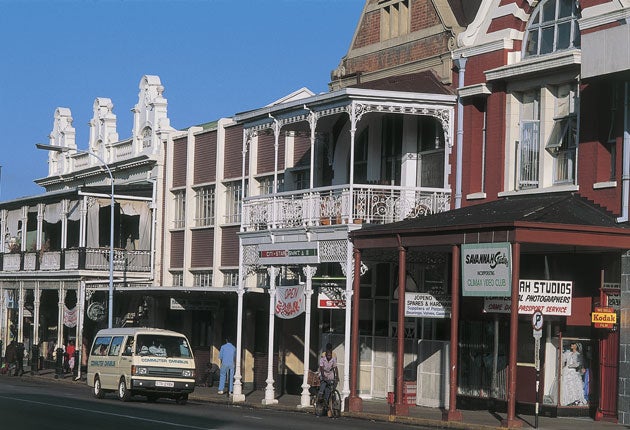A table for two? Join the queue in Zimbabwe
On the road

Your support helps us to tell the story
From reproductive rights to climate change to Big Tech, The Independent is on the ground when the story is developing. Whether it's investigating the financials of Elon Musk's pro-Trump PAC or producing our latest documentary, 'The A Word', which shines a light on the American women fighting for reproductive rights, we know how important it is to parse out the facts from the messaging.
At such a critical moment in US history, we need reporters on the ground. Your donation allows us to keep sending journalists to speak to both sides of the story.
The Independent is trusted by Americans across the entire political spectrum. And unlike many other quality news outlets, we choose not to lock Americans out of our reporting and analysis with paywalls. We believe quality journalism should be available to everyone, paid for by those who can afford it.
Your support makes all the difference.A restaurant culture is not the first thing that crosses your mind when contemplating a visit to Zimbabwe.
Not too long ago, eating out was a rare luxury: an average restaurant meal in an upmarket eatery was Z$900 billion per person (at least half the average middle-class worker's monthly salary), while a bottle of just-about-palatable Mukuyu wine (the only vineyard in Zimbabwe), was a little short of a trillion dollars. Even leaving a Z$10 million note as a tip was not out of the ordinary.
Added to that, most of the menu was unavailable due to food shortages. When ordering, despite what was printed on the faded menu, it was customary for the waiter to run through a "specials list" – roughly pencilled on a bit of scrap paper found in the kitchen somewhere – which indicated to the diner what food could actually be rustled up.
Since the dollarisation of the terminally-ill and now defunct Zimbabwean currency in late 2009 and with the growing economic stability that is sweeping the country, people are again enjoying the pleasure of eating out – albeit largely in the country's wealthier communities. Cafés and restaurants have mushroomed, particularly in Harare, which now has more than 100 European-style restaurants, many with wireless internet. These have lengthy menus and those without a booking can often be seen on the veranda twiddling their thumbs while waiting for a table.
Today, a latte costs no more than US$3, and a steak with a few prawns imported from Mozambique, a mere US$16. Wine lovers can choose a bottle of Australian Hollick Cabernet Sauvignon, and always a full complement of excellent South African wines from across the border.
While once portions were small and expensive, and regular power cuts often meant establishments had to close at times when they were most likely to attract custom, the restaurant scene in Zimbabwe is now burgeoning. So much so that eatout.co.zw, Zimbabwe's online restaurant booking website, has just celebrated its second anniversary. It lists more than 300 restaurants, along with their menus, wine lists, reviews and photographs. Since its inception in 2010, it claims to have processed more than 12,000 bookings on behalf of Zimbabwe's new wave of diners.
Footprint's 'Zimbabwe Handbook' is available now (£14.99)
Join our commenting forum
Join thought-provoking conversations, follow other Independent readers and see their replies
Comments